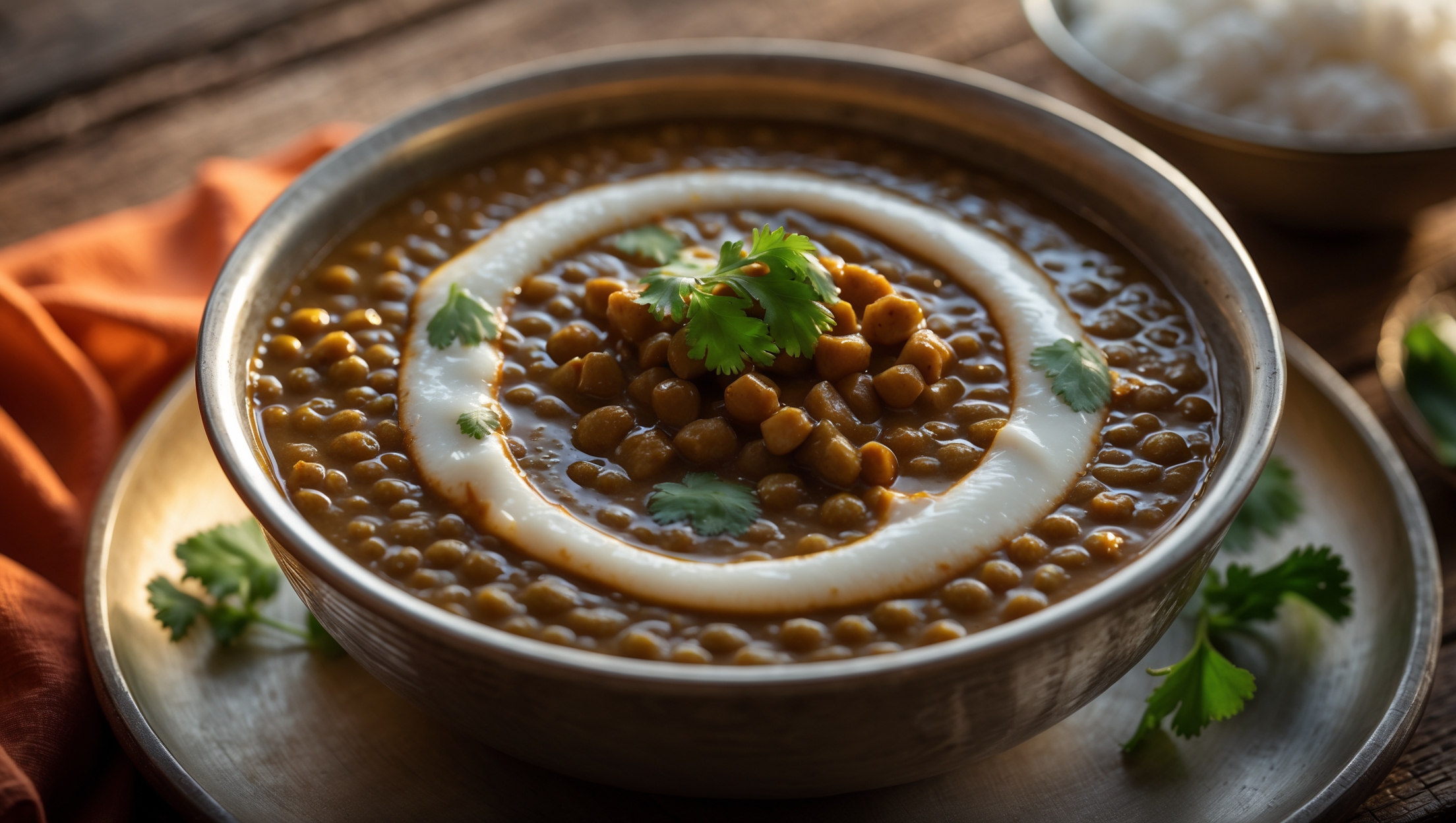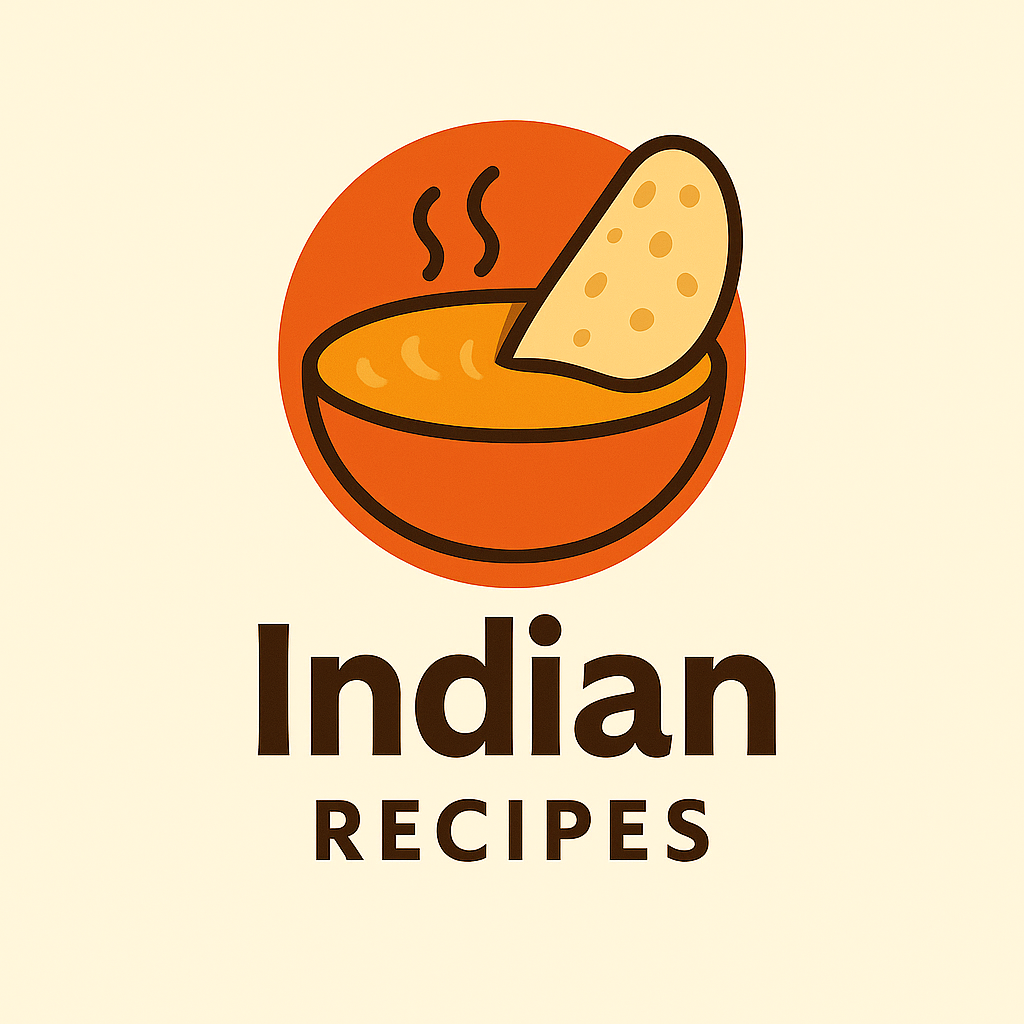"
Deliciously creamy and spicy|Perfect comfort food for dinner|Rich flavors without the dairy|Authentic taste, easy to make|Spicy, satisfying, and filling|Great with naan or rice|A new family favorite recipe|Impressively flavorful and rich
"

Signature
Featured
Dairy Free and Vegetarian Dal Makhani
This luscious dairy-free Indian dal makhani is a creamy, vegetarian dinner delight, rich with spices and slow-cooked to perfection.
Prep
20 minutes
Cook
2 hours
Serve
Serves 4
Kcal
Approx. 320 calories per serving
- 200g (1 cup) whole black lentils (urad dal), soaked overnight
- 50g (1/4 cup) red kidney beans, soaked overnight
- 1.5 liters (6 cups) water
- 2 tbsp vegetable oil
- 1 large onion, finely chopped
- 4 cloves garlic, minced
- 1-inch piece ginger, grated
- 400g (14 oz) canned crushed tomatoes
- 1 tsp cumin seeds
- 1 tsp coriander powder
- 1 tsp garam masala
- 1/2 tsp turmeric
- 1/2 tsp red chili powder
- Salt, to taste
- 120 ml (1/2 cup) coconut cream
- Fresh coriander, chopped for garnish
- Drain and rinse the soaked lentils and kidney beans. Place them in a large pot with 1.5 liters (6 cups) of water. Bring to a boil over high heat, then reduce to low and let them gently simmer for about 1.5 hours until they are tender and creamy, stirring occasionally to ensure they don’t stick to the bottom.
- In a separate heavy-bottomed pan, heat the vegetable oil over medium heat. Add the cumin seeds and let them sizzle until they release their warm, nutty aroma.
- Add the finely chopped onion, stirring patiently until it turns a deep golden brown, about 5-7 minutes. This step builds the foundation of flavor, so take your time.
- Introduce the minced garlic and grated ginger to the pan, sautéing for another 2 minutes until their fragrance blooms.
- Stir in the crushed tomatoes, followed by the coriander powder, garam masala, turmeric, and red chili powder. Cook this mixture on medium-low heat for about 10 minutes, allowing the spices to meld and the oil to separate from the rich tomato base.
- Gently fold in the cooked lentils and kidney beans into the spiced tomato mixture. Mix well and let it all simmer together for 20 minutes, stirring occasionally to marry the flavors.
- Pour in the coconut cream, stirring to combine. Adjust salt to taste and let it simmer for an additional 10 minutes until the dal achieves a thick, creamy consistency.
- Finish with a generous sprinkle of fresh coriander before serving. Relish this soulful dal makhani with basmati rice or warm naan, savoring the depth of flavors in every bite.
⚠️ Important Health & Allergy Disclaimer
This recipe is provided for informational purposes only. While efforts are made to accommodate common dietary restrictions, we do not guarantee that any recipe is free from allergens or cross-contamination.
It is the responsibility of each user to carefully review all ingredients and determine their suitability based on their personal health conditions, allergies, or dietary needs.
It is the responsibility of each user to carefully review all ingredients and determine their suitability based on their personal health conditions, allergies, or dietary needs.
FAQ for
Dairy Free and Vegetarian Dal Makhani
What ingredients are used in Dal Makhani?
Whole black lentils, red kidney beans, water, vegetable oil, onion, garlic, ginger, crushed tomatoes, spices, coconut cream, and fresh coriander.
How to cook Dal Makhani at home?
Learn how to cook Dal Makhani by simmering soaked lentils and beans, frying spices with onion, garlic, and ginger, mixing in tomatoes, and then combining everything to cook until creamy.
Can Dal Makhani be made vegan?
Yes, this recipe is vegan-friendly as it uses vegetable oil and coconut cream instead of traditional dairy ingredients.
What is the best way to serve Dal Makhani?
Serve Dal Makhani with basmati rice or warm naan for a fulfilling meal. Garnish with fresh coriander to enhance flavour.
How long can you store Dal Makhani in the refrigerator?
Dal Makhani can be refrigerated for up to 5 days in an airtight container. Reheat gently before serving.
All calorie and nutritional information provided is strictly an estimate. Actual values may vary significantly depending on exact measurements, specific ingredients, brands, and preparation methods used.
The calorie count is an approximation and can differ from actual results. Always consult verified nutritional sources or a qualified health professional if strict adherence to calorie intake is required.
DishPot does not guarantee the accuracy of any nutritional data and is not liable for any health-related consequences, misinterpretations, or outcomes based on this information.
The calorie count is an approximation and can differ from actual results. Always consult verified nutritional sources or a qualified health professional if strict adherence to calorie intake is required.
DishPot does not guarantee the accuracy of any nutritional data and is not liable for any health-related consequences, misinterpretations, or outcomes based on this information.

.svg)
